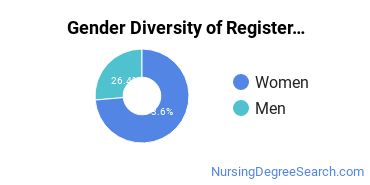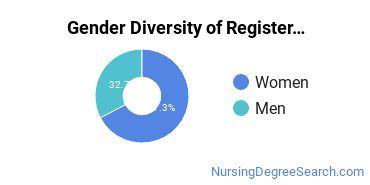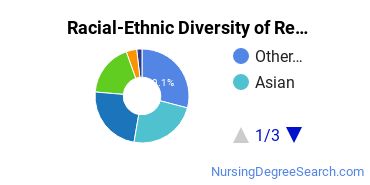Registered Nursing at Pacific Union College
Every registered nursing school has its own distinct culture and strengths. We've pulled together some statistics and other details to help you see how the registered nursing program at Pacific Union College stacks up to those at other schools.PUC is located in Angwin, California and has a total student population of 959.
Want to know more about the career opportunities in this field? Check out the Careers in Registered Nursing section at the bottom of this page.
PUC Registered Nursing Degrees Available
- Associate’s Degree in Registered Nursing
- Bachelor’s Degree in Registered Nursing
Online Classes Are Available at PUC
If you are a working student or have a busy schedule, you may want to consider taking online classes. While these classes used to be mostly populated by returning adults, more and more traditional students are turning to this option.
For those who are interested in distance learning, PUC does offer online courses in registered nursing for the following degree levels:
- Master’s Degree
PUC Registered Nursing Rankings
The registered nursing major at PUC is not ranked on College Factual’s Best Colleges and Universities for Registered Nursing. This could be for a number of reasons, such as not having enough data on the major or school to make an accurate assessment of its quality.
Registered Nursing Student Demographics at PUC
Take a look at the following statistics related to the make-up of the registered nursing majors at Pacific Union College.
PUC Registered Nursing Associate’s Program

PUC does a better job with serving racial-ethnic minorities than the typical school does. Its associate's program in registered nursing graduates 35% more racial-ethnic minorities than the nationwide average.*
The following table and chart show the race/ethnicity for students who recently graduated from Pacific Union College with a associate's in registered nursing.

| Race/Ethnicity | Number of Students |
|---|---|
| Asian | 30 |
| Black or African American | 3 |
| Hispanic or Latino | 21 |
| White | 18 |
| International Students | 0 |
| Other Races/Ethnicities | 8 |
PUC Registered Nursing Bachelor’s Program

Prospective students may be interested in knowing that this school graduates 28% more racial-ethnic minorities in its registered nursing bachelor's program than the national average.*
The following table and chart show the race/ethnicity for students who recently graduated from Pacific Union College with a bachelor's in registered nursing.

| Race/Ethnicity | Number of Students |
|---|---|
| Asian | 13 |
| Black or African American | 1 |
| Hispanic or Latino | 11 |
| White | 11 |
| International Students | 0 |
| Other Races/Ethnicities | 5 |
Related Majors
Careers That Registered Nursing Grads May Go Into
A degree in registered nursing can lead to the following careers. Since job numbers and average salaries can vary by geographic location, we have only included the numbers for CA, the home state for Pacific Union College.
| Occupation | Jobs in CA | Average Salary in CA |
|---|---|---|
| Registered Nurses | 294,510 | $106,950 |
| Nursing Instructors and Professors | 3,390 | $101,320 |
References
*The racial-ethnic minorities count is calculated by taking the total number of students and subtracting white students, international students, and students whose race/ethnicity was unknown. This number is then divided by the total number of students at the school to obtain the racial-ethnic minorities percentage.
More about our data sources and methodologies.
